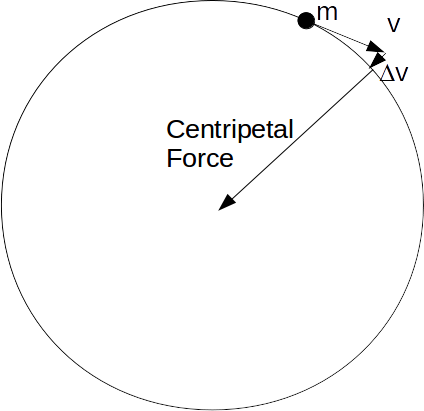
\[m\]
with speed \[v\]
moving is a circle radius \[r\]
, the acceleration \[a=\frac{v^2}{r}\]
the force \[F=\frac{mv^2}{r}\]
is called the centripetal force, and is directed towards the centre of the circle. This is the same result as using Newton's Second Law \[F=ma\]
.When a ball at the end of a string is swung around, the centripetal force is supplied by the tension in the string. For a planet in orbit, the centripetal force is supplied by the force of gravity.
If at any point the centripetal force is removed, the body will travel in a straight line with constant speed, according to Newon's Third Law - A body continues in a state of uniform motion unless acted on by an external force.
Do not get centrifugal force and centripetal force confused. They have the same magnitude, but the centripetal force is the force required for circular motion. Centrifugal force is due to the inertia of the body in circular motion. When you are on a rollercoaster, the centrifugal force is the force which makes you guts protest.
